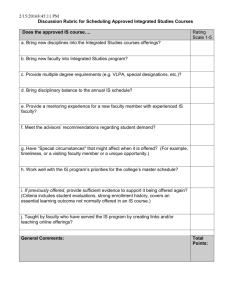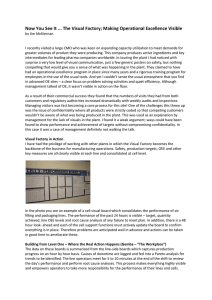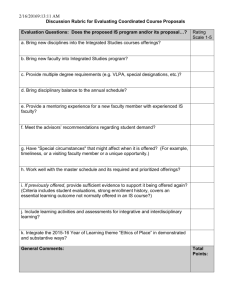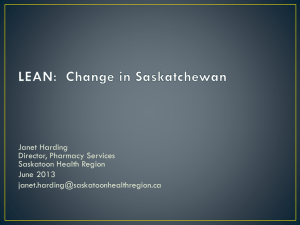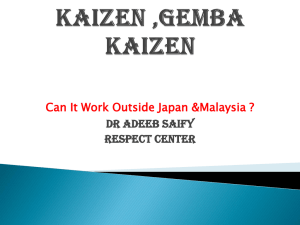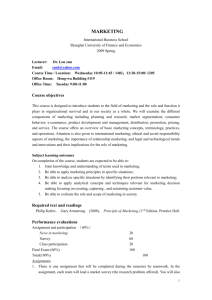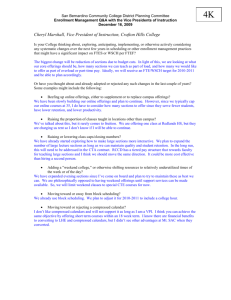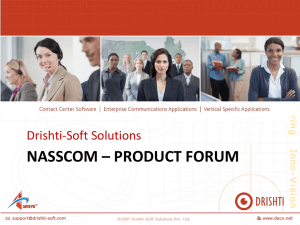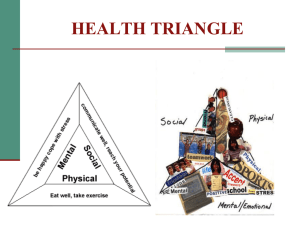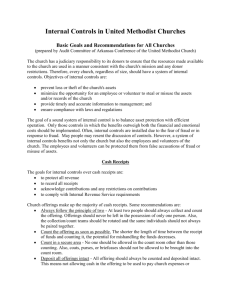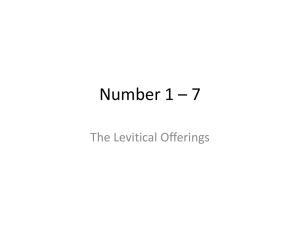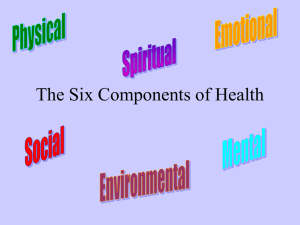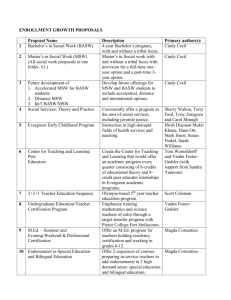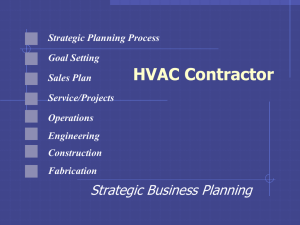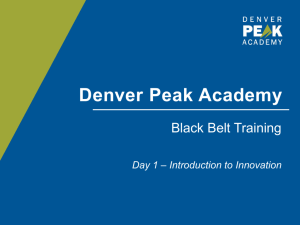2013 Presentation Anderson - Performance Excellence Network
advertisement
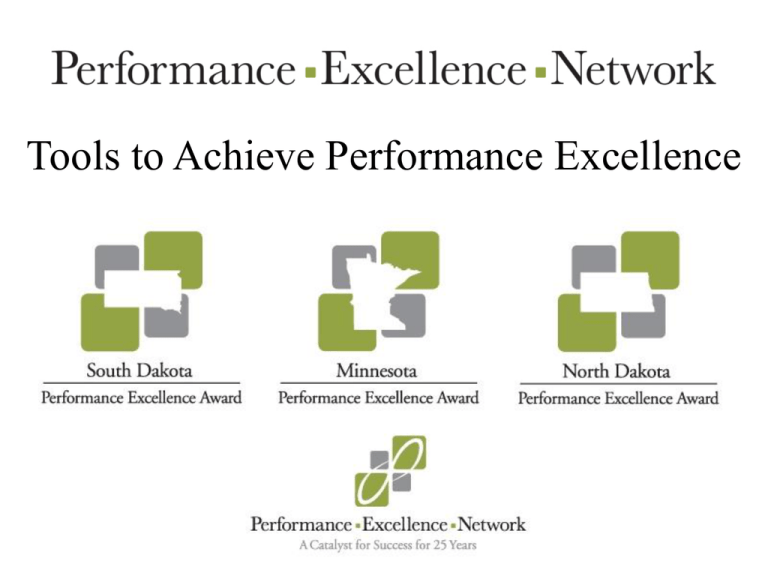
Tools to Achieve Performance Excellence Dr. Kevin Anderson, Senior Consultant at Accelare, Kevin.anderson@accelare.com YOUR TOOLBOX IS FULL: NOW WHAT? Your tool box is full: now what? • Objective: – You have dozens of process tools in your toolkit – The question now is “how” to approach your work • Our Topics: – Get to the heart of the problem – Gemba! – Change the culture, Do not say the word “culture” – Our process for selecting tools to impact outcome • Good News: Interaction Accelare: strategy to execution • Accelare Turns Strategy Into Action: Accelare has a simple method for leveraging capability models to deliver upon strategy and projects of any kind. We work with C-Level, Operations, Talent and Training. • The Strategy to Execution (S2E) process involves identifying the capabilities for value creation. We then mobilize to take action based on where the capability model indicates focus is needed. Q1: About my ability to witness the source of the problem first hand • Gemba: “The Real Place” Gemba: getting below the iceberg Technology Downtime Lower Sales Customer Cancellations Rework Inaccurate process outputs Policy changes Product sent late Opportunity cost of sales Audits Cycle times long Inefficient policies Vendor confusion Process control Lowered customer loyalty Higher cost to customers Visible to Leadership Visible to Front-line Resources Brand reputation Poor product availability Risk Ineffective Inspections Average industry COPQ = 15% - 25% of revenue Source: Deming Center at Columbia University Capability Model = identification of key areas for improvement, value creation (and tools) 1 Develop & Manage Offerings 2 Manage Provider Engagement 3 Awareness to Card 1.1 Develop & Manage Master Offering Portfolio 2.1 Develop, Maintain Provider Network 3.1 Determine Market Segment Strategy 1.2 Analyze Environment 2.2 Segment Providers 1.3 Conduct Segmentation 2.3 Develop Engagement Strategy 3.2 Manage Distribution Channels 1.4 Identify Constituent Unmet Needs & Expectations 1.5 Develop Offering Strategy 1.6 Define and Develop New Offering and Enhancements 1.7 Offering Development Life Cycle (Planned Variety) 2.4 Develop TREND management initiatives 2.5 Develop/Implement Performance Incentives 2.6 Develop Contract Models 2.7 Contract w/Providers Health and Wellness Management 4.1 Capture Data 4.2 Analyze Data for Future Program Planning 4 Manage Customer Relationships 5.1 Transition Account Relationship 6.4 Adjudicate Claims/ HIPAA Transactions 6.5 Invoice Accounts 4.4 Report Results and Future Plans 5.4 Deliver Self-Service Capability Needs 3.5 Prospect Customers 4.5 Review/Refine Offerings Based on Analysis 5.5 Provide Reporting and Analysis 4.6 Identify Populations 5.6 Provide Reporting and Analysis 2.9 Manage Provider Relationships 3.8 Determine Customer Needs and Offering Options 2.10 Manage Regulatory Compliance 3.9 Underwrite and Determine Rates/Pricing 2.11 Manage Provider Performance/Cont 3.10 Determine Quality Measures and Targets 2.12 Manage Provider/Network Experience 3.11 Develop Cust. Value Proposition/Present Proposal 3.12 Negotiate and Close Accounts 3.13 Set up Account 3.14 Configure Account Contract 3.15 Train Plan Administrators 3.16 Educate, Enroll & Profile Members 3.17 Issue Customer Materials 4.7 Engage Members 4.8 Interact/Intervene with Members 4.9 Oversee End-to-End Process Quality 4.10 Delegate Process Components to Providers 6.2 Service Members 5.3 Define reporting needs & metrics 3.4 Develop 3rd Party Strategy 3.7 Respond to Presale Inquiries and Questions 6.1 Service Accounts 6.3 Service Providers 3.3 Manage Intermediary Experience 2.8 Enroll, Set Up, Credential 6 Service Accts, Membs & Pvdr’s 5.2 Implement Lifestyle/ Wellness Offerings 4.3 Analyze Data Retrospective Program Impact 3.6 Advertise and Market Brand & Solutions 5 5.7 Manage Loyalty and Renewals 5.8 Renew Business 5.9 Manage 360 Degree View of the Customer 6.6 Manage Account Receivable 6.7 Prepare Account Financial Reports 6.8 Self Service 6.9 Service Analytics and Feedback 6.10 Profiling and Routing Q2: About how we change the culture of the organization without using the word “culture” The First Rule of Fight Club http://www.bing.com/images/search?q=fight+club+movie+poster&id=DDE381C1B A22472E712683587F39983A641C7EA8&FORM=IQFRBA#view=detail&id=0CCF047E1 A1CD5A07211A3CB210F146B9721EEAB&selectedIndex=1 Organizational culture definition Organizational Culture is… • “The set of beliefs, values, and norms, together with symbols like dramatized events and personalities, that represent an organization's unique character and provide the context for action in it and by it.” Gareth Morgan • As a Result Organizational Culture: – Is about fundamental traditions, authority, routines and structure – Profoundly impacts attitudes, actions and outcomes – Is unique and can be shaped for the benefit of all 9 Culture Initiatives = Bumper Stickers To REALLY Influence culture: Ethos = Trust Pathos = Emotions Logos = Logic Q3: Our process for selecting tools which drive the desired outcomes? • Focus on the critical few tools that work Checklist – tools should be… • • • • • • Effective in practice (Pilot them!) Fits the organization Validated to an extent Get enough training [Be proficient] Resonate with practitioner Other….? Discussion at your tables example • Sample Discussion: – Praise: Tie up various concepts into a nice bow – Concern: Exhaustion! Table discussions – 10 minutes
